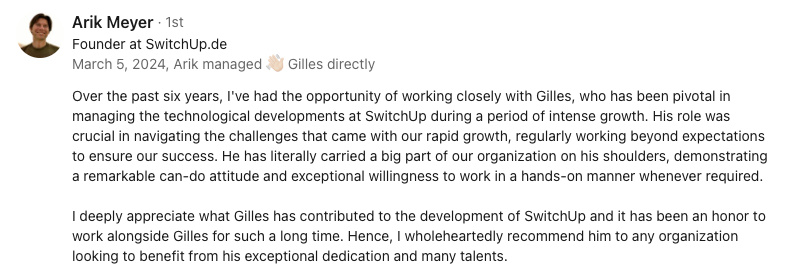Abstract:
The article explores how asynchronous peer groups offer an ideal solution for tech minimalists seeking autonomy, simplicity, and meaningful connection without the constant interruptions of real-time meetings. It highlights the drawbacks of always-on calls—such as disrupted focus, digital fatigue, and exclusion of those with nontraditional schedules—and demonstrates how async groups create flexible, inclusive environments where members can contribute thoughtfully on their own time. Drawing on examples from global platforms like Stack Overflow and companies such as GitLab, as well as the author's personal experience leading multicultural teams, the article details practical steps for building effective async groups: setting clear agreements, rotating roles, using minimalist tools like Notion and Loom, and establishing gentle rituals to foster trust. It emphasizes the importance of inclusivity, regular check-ins, and clear boundaries to prevent burnout, and provides actionable advice for launching or joining distraction-free, supportive communities that align with tech minimalist values. Ultimately, the guide shows that with intentional structure and simple workflows, asynchronous peer groups can provide deeper support, stronger relationships, and greater control for tech minimalists navigating a digital world.
Why asynchronous peer groups matter for tech minimalists
For tech minimalists like me, the dream is simple: work on my own terms, manage my time, and avoid being yanked into a whirlpool of endless notifications. But, ah, reality! There’s nothing quite like the sinking feeling when a late-night calendar ping lights up my phone—another “quick sync” at 8 p.m., just as I’m about to enjoy dinner in Lisbon. I used to joke that my time zone was “permanently inconvenient.” Real-time meetings would pop up at odd hours, interrupting my focus, and sometimes dragging on until my eyes were half-closed. Instead of freedom, I felt more trapped—like my calendar was a game of Tetris I could never win.
If you’ve ever felt that dread, you’re not alone. This article is for those of us who crave autonomy and simplicity. I’ll share how asynchronous peer groups have helped me reclaim my time, build stronger connections, and actually feel included—without the burnout. You’ll find practical ideas for building async communities, minimalist tools to keep things clutter-free, and rituals that make these groups work without frying your brain.
I’ll also bring in examples from global platforms and remote-first teams, plus tips for launching or joining a group that matches your values. If you’re tired of calendar gymnastics or just want a calmer, more human way to connect, I hope my stories and lessons will help you see how async groups can keep things simple and supportive—without all the noise.
Why asynchronous peer groups matter for tech minimalists
The hidden costs of real-time meetings
Let me paint a picture: It’s 8 p.m. in Lisbon, and my phone buzzes with a calendar alert. My heart sinks. Another “quick sync” with people scattered across the globe. For tech minimalists like me, these meetings are rarely quick or painless. They break my focus, force me onto late calls, and sometimes mean I’m whispering into my laptop while my partner tries to sleep. The struggle is real.
Trying to “find a time” for live calls is like chasing a moving target. It’s exhausting and feeds digital fatigue. The irony is almost funny—tech work promises freedom, but constant meetings chip away at it, one ping at a time. And let’s be honest: these meetings leave out a lot of people.
Who gets left out? Anyone with a weird schedule, caregiving duties, or a nomadic lifestyle. Real-time meetings don’t work for parents juggling school runs, travelers hopping time zones, or anyone who works best outside the nine-to-five. It’s hard to build real support when half the group can’t even show up. Asynchronous formats, I’ve found, offer a chance for deeper, fairer connection.
The depth and flexibility of asynchronous conversations
I remember the first time I joined an async group. Someone posted on Monday: “What’s your biggest challenge this week?” I didn’t have to scramble for an answer—I could pause, think, and reply the next morning over coffee. The responses were more thoughtful and honest than anything I’d heard in a rushed Zoom call.
Some people (me included) don’t love speaking up in real-time calls. In async spaces, introverts and those who get anxious in live settings can join in on their own terms. Everyone gets more space to share, and it feels fairer. That flexibility is a lifesaver for people whose routines change a lot.
Async groups shift as life shifts. If I’m traveling, looking after family, or just need a quiet week, I don’t lose my place. Members stay in touch and supported, wherever or whenever they work. Knowing this, the next step is building async groups that actually work.
Building effective asynchronous groups for tech minimalists
Frameworks that keep async groups strong
A solid async group starts with clarity. Clear goals, agreed participation, and a shared purpose matter. Many groups (mine included) set these basics out in a written agreement so everyone knows what to expect, how to join in, and what the group is for. Clear agreements help build trust and make it easier to work together, especially when everyone’s on their own schedule.
After the basics are set, rotating roles keeps things fair. Rotate tasks like being facilitator, note-taker, or reminder—so no one always does the admin. For example, one week someone leads the chat, another week someone posts the updates. This keeps things balanced and lets everyone join in.
Regular and simple check-ins keep groups moving. Weekly prompts, monthly topic discussions, or basic updates can help people stay linked without overloading anyone. These routines anchor the group and leave room for changing schedules. Once structure is in place, having the right tools makes all the difference.
Minimalist tools and workflows for async success
Choosing tools wisely is key. Simple, adaptable platforms work best for groups that want to avoid clutter. Some good options are:
- Notion for notes and shared docs
- Loom for quick video updates
- Trello for visual task tracking
These organize discussions and updates with minimum setup. By sticking to just a few simple tools, groups avoid confusion and focus on real connection.
Templates make things smoother too. Here are a few formats I’ve used that really help:
- A Notion doc for weekly updates, where each member posts when it suits them
- Shared agendas for recurring topics, so nobody wonders where to write their piece
- Simple feedback forms or tracking templates, so even with little time, it’s easy to join in
Familiar formats mean less stress. And when it comes to reminders, less is more.
Automatic prompts or gentle bots can remind people to check in, but too many disrupt more than they help. Keep prompts light to maintain involvement without piling on extra noise. Some groups deepen trust with routines and small rituals.
Rituals and routines that foster trust and follow-through
Simple rituals help an async group feel connected. Maybe there’s a “Monday Wins and Woes” thread, or a monthly story post for sharing a big lesson. These habits encourage honest sharing and build stronger ties.
Making commitments public helps too. Members can post weekly goals, challenges, or short statements about their aims. Some groups use:
- A shared board for progress updates
- Weekly commitment posts
- End-of-month reflection discussions
Seeing each other’s goals keeps everyone motivated—no live meetings needed. It’s also good to review and adjust group rules from time to time.
A quarterly check-in to discuss what’s working and what’s not keeps the group flexible and supportive. These check-ins maintain a healthy culture and make sure the group fits everyone’s needs. But even the best setup can face challenges with diversity or burnout.
Preventing burnout in async groups
Embracing diversity and making inclusivity real
Inclusive async groups work best when everyone can join in, regardless of background. Keeping language simple and cutting out jargon lets non-native speakers feel comfortable. In one group, we even kept a running list of “tricky words” and sometimes translated key documents—yes, it makes the group more welcoming, even if sometimes the English is a bit funny.
Honoring different work habits and cultures matters too. For example, rotating rare live sessions, writing down group decisions for those who miss them, and considering holidays all make things fairer. Cultural points to remember:
- Don’t pick times based on just one time zone
- Check for holidays before planning anything
- Share key updates in writing so they’re easy to find
Moderators help keep things welcoming. They notice if someone’s left out, gently guide chats, or remind people of group etiquette. Good moderation makes sure everyone feels safe. Of course, digital fatigue is another issue to watch for.
Guardrails against digital fatigue and burnout
Clear rules on reply times—like 24 to 48 hours for non-urgent stuff—help reduce pressure. Agreeing on this early means no one needs to feel bad about delays. A healthy async setup might include:
- Written rules for response time
- Using delay-send after hours
- Encouraging people to mute notifications when off
Status signs and ‘offline’ notes help, too. Marking time off on a group calendar or posting a simple emoji update lets everyone know what’s going on. Some examples:
- “Do Not Disturb” or “On Vacation” flags
- Shared calendars for absences
- Quick updates in group chats
Setting separate channels for urgent messages helps avoid overload. One group I joined created a special urgent-only chat for emergencies, while keeping most talk in the main space. Clear rules on what counts as urgent help people relax, knowing they won't miss anything critical.
Regular value checks—just a friendly reminder to see if the group’s routines still fit—keep things meaningful and healthy. This can be as easy as a quarterly review of agreements or a relaxed group thread about what feels good or off.
From my time leading multicultural teams in Beijing and Berlin, I learned this the hard way: once, our group nearly fell apart because half the team felt left out of decisions made in late-night calls. We switched to written updates and async check-ins, and suddenly, everyone’s voice was heard—even the quiet ones. It wasn’t perfect (sometimes the English was, how you say, “creative”), but trust and well-being improved. With this balance, async groups can stay connected without tiring people out.
A quick note on digital fatigue from LisbonWorking remotely from Lisbon, I once found myself drowning in Slack notifications, my brain buzzing like a beehive. I was close to burnout—until I joined a minimalist async group. We agreed on “quiet hours,” used only one platform, and kept updates short. Suddenly, I could breathe again. My focus returned, and I even started enjoying my workdays (and my espresso breaks) a little more.
Lessons from real-world async collectives
Global platforms that make async work
Some of the most established peer groups in tech work fully asynchronously. On platforms like Stack Overflow and GitHub, people post questions, review code, and solve problems together—no need to match up schedules. This lets people from different countries learn and contribute at their own pace. Indie Hackers is another place where founders and makers support each other in forums and interviews, building friendly networks. Async ways of working are also important for remote-focused companies.
At companies like GitLab and Automattic, public handbooks and regular async check-ins help teams stay synced. Popular routines include:
- Detailed handbooks for process and rules
- Public threads for weekly goals and challenges
- Rotating tasks for moderation and feedback
Here’s a fun fact I picked up from a friend at GitLab: their team once struggled with “meeting creep”—too many live calls sneaking back in. They solved it by introducing a “no-meeting week” every quarter, which not only boosted productivity but also gave everyone a chance to recharge. It’s a simple hack, but it works.
Research shows that async peer networks support not just productivity, but also skill growth and a sense of belonging. For many, async platforms are now their main source of support. So what makes minimalist async groups the best?
What minimalist async groups get right
Minimalist async groups keep things simple. Fewer tools, easy routines, and regular agreement reviews help everyone stay focused. Simplicity and steady routines usually beat big fancy features. Main habits include:
- Using just a couple platforms
- Sticking to a set check-in each week
- Keeping templates short
- Reviewing group agreements every few months
Too many reminders or admin chores often backfire. Bombarding people with notifications or tasks usually kills engagement. And honestly, if your phone buzzes every five minutes, who wouldn’t want to toss it out the window? Less admin leads to stronger, friendlier connections. Trust grows when people can share struggles and wins openly.
The most enduring async groups let members admit doubts, not just share successes. Openness and safety help people learn and support each other. For me, the best moments have come when someone says, “I’m stuck,” and the group rallies around them—no judgment, just help.
A minimalist’s action plan for building your own async collective
Steps to start your own async group
A clear start is key. Decide what the group is for and what values matter. Then, use a straightforward message to invite others who appreciate async communication. Here’s a basic outline:
- Set the mission and shared values
- Invite members with a simple message
- Make sure everyone is clear about participation
- Hold a first onboarding session or post
Once together, a lean onboarding helps everyone settle in fast.
Onboarding for a smooth start
Light onboarding feels more welcoming. Share group agreements, participation guides, and simple instructions for using the chosen platform. It makes the group more welcoming, yes, even if sometimes the English is a bit funny. Key steps often are:
- Short overview of purpose and group rules
- Expectations for replying
- Clear how-to for using the platform
- Quick FAQ for common problems
A relaxed first prompt can open things up right away.
Breaking the ice with structured prompts
A gentle, structured opener helps people feel comfortable. A thread on “why I’m here” or one simple goal for the week can help break the ice. These kinds of prompts help set norms and encourage honesty from the start. Thinking of joining an existing async group? Here’s how to check if it’s right.
How to spot healthy async communities
A good async group has active but respectful chatting, clear guidelines, and moderation. Newcomers feel welcomed and help is easy to find. When checking out a group, look for:
- Regular, meaningful posts and replies
- Clear participation rules
- Active and fair moderators
- Easy-to-find onboarding and support info
Privacy matters too, especially for tech minimalists.
Privacy and security essentials
Check a group’s privacy and data rules before joining. It’s good to see options for anonymous posts or controls over what you share. Features like encrypted messages, clear data policies, and adjustable privacy help keep things comfortable for those valuing autonomy. The platform itself also matters.
Choosing minimalist, distraction-free platforms
Platforms focused on purpose, not noise, help keep people engaged and relaxed. Simple, distraction-free spaces—like Notion or Threads—work best for async groups that want focus. Avoid spaces overloaded with notifications or demands for real-time responses. These platforms help tech minimalists stay true to their priorities.
Choosing asynchronous peer groups has given me more control, stronger relationships, and a lot less digital stress. I’ve learned that with just a few easy tools, clear agreements, and steady routines, online groups can become real sources of support—without constant pings or forced meetings. The journey isn’t always smooth (sometimes my French sneaks into my English, and sometimes I forget to mute notifications), but async groups have helped me find freedom and focus, whether I’m in Lisbon, Berlin, or somewhere in between. If you’re searching for a calmer, more human way to connect, maybe an async group is exactly what you need.














